English Gothic Live: Imogen’s Blog
Here Be Monsters
Last summer, twelve students and one professor shared an unforgettable experience called English Gothic Live, a course on medieval and medievalist architecture which we studied on site while based at the University of Warwick. One of the course requirements was for each student to write a blog entry, and we will be posting all of those here over the coming weeks.

When the Normans arrived in England they brought destruction, attempting to level Anglo-Saxon buildings. They brought decoration, valuing sculpture, ornamentation and creativity. They also brought monsters.
Beakhead is a type of sculptural ornamentation found on some Norman and Romanesque doorways across Britain. In place of the more common patterns like chevrons or dogtooth, beakhead is punctuated by faces, each with an element that extends over and grasps the curved piece of masonry they’re carved from. Beaks, giving the feature its name, but also tongues and teeth all reach out and around. It is generally found arching over doorways, but occasionally continues vertically along the jambs. Each archway is unique and eclectic, made up of a charming cast of human-like, animal or monstrous characters. Look at a few examples and you’ll see variety and inventiveness characterizing this unusual feature.
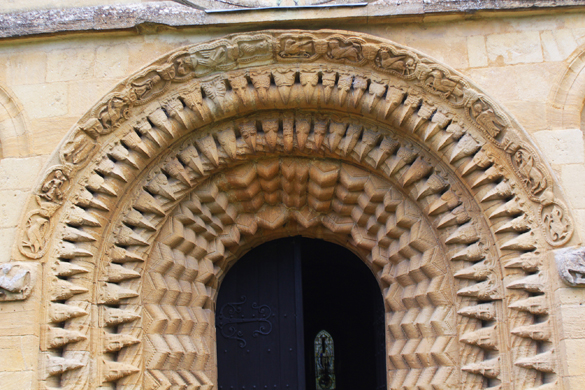
In Iffley, the beakhead at St. Mary the Virgin is literal. It consists entirely of bird heads with sharp beaks curving out over the masonry. The sculpture is also unique in that it runs from the base of the doorway up and along the arch without interruption by capitals or other architectural elements.
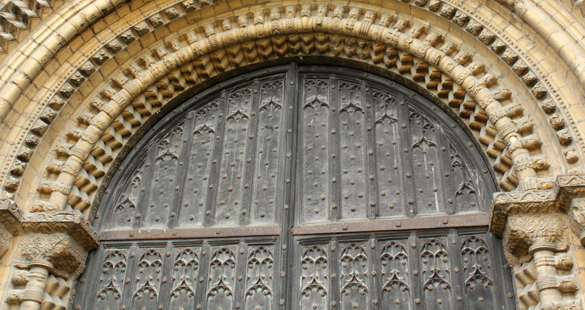
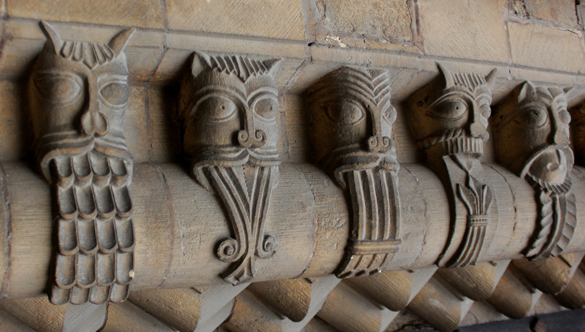
Like Iffley, Lincoln Cathedral has intense beakhead that runs vertically up the sides of the doorway and across the arch. Unlike Iffley, Lincoln’s curved beak portions act as a column and are topped with an intense foliate capital before continuing along the arch.
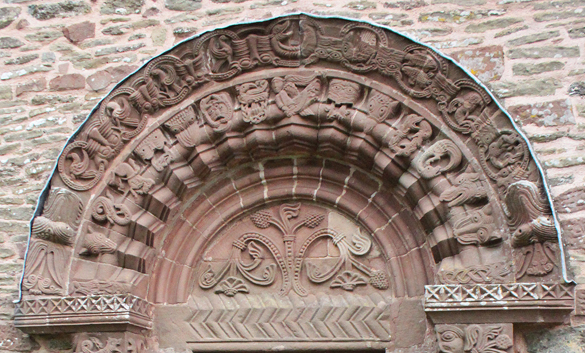
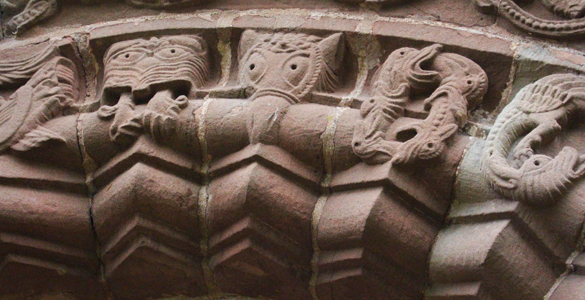
The Parish Church of St. Mary and St. David at Kilpeck lacks the vertical portions of Iffley and Lincoln, but contains some of the most unique carvings. There are familiar animals like foxes and hares but some of the other images are a little harder to decipher. Creatures with dual tongues, serpents and angelic figures make an appearance.
Their meanings are mysterious. Their faces sometimes comical, always charming, sometimes frightening, always mysterious. The Normans brought a new wave of decoration. With beakhead, the Normans brought monsters.
Which is your favorite? What creatures can you see?